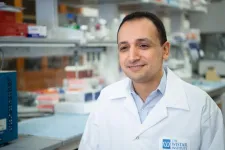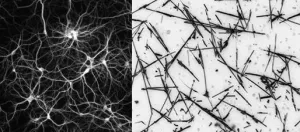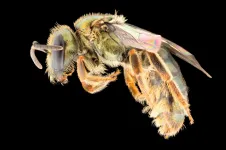(Press-News.org) PHILADELPHIA -- (June 29, 2021) -- New biomarkers that predict HIV remission after antiretroviral therapy (ART) interruption are critical for the development of new therapeutic strategies that can achieve infection control without ART, a condition defined as functional cure. These biomarkers can also provide critical clues into the biological mechanisms that control HIV replication after stopping therapy, and can help design novel strategies to cure HIV. Scientists at The Wistar Institute have identified metabolic and glycomic signatures in the blood of a rare population of HIV-infected individuals who can naturally sustain viral suppression after ART cessation, known as post-treatment controllers. These findings were published in Nature Communications and may provide new, non-invasive biomarkers to predict both the likelihood and duration of HIV remission after treatment interruption.
Cure-directed clinical trials are designed to test new therapeutic interventions to eradicate HIV infection. These trials require study participants to undergo analytical treatment interruption (ATI) to allow researchers to evaluate their strategies in the absence of the confounding effect of ART. HIV remains undetectable during ART, yet in the vast majority of cases viral loads go up within a few days or weeks after stopping ART and need to be carefully monitored. Currently, there are no simple, non-invasive methods available to monitor viral rebound after ATI. Therefore, biomarkers are urgently needed to improve the safety of ATI by predicting how long a patient can be off ART, and will be critical to understanding the mechanisms of post-ART viral control.
"We analyzed one of the largest sets of samples ever studied from post-treatment controllers, who don't experience viral rebound after ART interruption," said Mohamed Abdel-Mohsen, Ph.D., assistant professor in The Wistar Institute Vaccine & Immunotherapy Center, who led the study. "This condition is extremely rare and provides very important insights into what a functional HIV cure looks like. Analyzing the blood of these individuals, we identified promising biomarker signatures that may fast-track future HIV cure trials and treatments. These biomarkers also provide us with insights on how post-treatment controllers restrain infection and how we can design novel HIV curative strategies to recapitulate this promising phenotype in the millions of HIV-infected individuals worldwide."
The study was conducted using blood samples available from two cohorts of patients who participated in previous clinical trials: a group of 24 HIV-infected individuals who underwent an open-ended ATI without concurrent immunoregulatory agents (the Philadelphia cohort) and one group of 74 individuals from six AIDS Clinical Trial Group (ACTG) clinical studies that evaluated different vaccines and immunotherapies. Importantly, this cohort included all 27 participants from these studies that were identified as post-treatment controllers and 47 non-controllers from the same studies.
Researchers analyzed blood samples collected shortly before ATI for the presence and quantity of certain small molecules produced as a result of cellular metabolism, called metabolites, and proteins that have sugar molecules attached to them, called glycoproteins. Metabolites and glycoproteins are secreted or leaked from various tissues and enter the circulation, therefore their abundance and chemical characteristics can reflect the overall status of multiple organs, making them excellent candidates for biomarker discovery.
The team first performed metabolomic analyses on the Philadelphia cohort samples and identified a select set of metabolites linked to inflammation whose pre-ATI levels are associated with time to viral rebound. These observations were confirmed in virus reactivation assays in vitro.
They then extended the metabolomic analysis to the larger cohort, also including glycomic studies to measure the levels of sugar-bound proteins. Since this cohort includes post-treatment controllers and non-controllers, Abdel Mohsen and colleagues were able to confirm their observations by comparing the two groups.
Using machine learning algorithms, they then combined the identified biomarkers to create two models for prediction of the likelihood and timing of viral rebound, with 95% and 74% accuracy, respectively.
"A growing body of research applies metabolomics and glycomics methods for the unbiased discovery of biomarkers associated with clinical conditions," said Leila Giron, Ph.D., postdoctoral fellow in the Abdel-Mohsen lab and first author on the study. "We are among the first to apply this strategy in the context of ATI to analyze two carefully selected and well characterized groups of individuals, including a rare population of post-treatment controllers."
Overall, this study identified potential biomarkers associated with control of HIV after ART and has the potential to contribute significantly to both HIV cure research and discovery of novel biological mechanisms underlying viral control in people living with HIV.
INFORMATION:
Co-authors: Qin Liu, Xiangfan Yin, Emmanouil Papasavvas, Mohammad Damra, Aaron R. Goldman, Hsin-Yao Tang, and Luis J. Montaner from The Wistar Institute; Clovis S. Palmer (co-first author) from The Burnet Institute, Melbourne, Australia and Monash University, Melbourne, Australia; Radwa Sharaf, Behzad Etemad and Jonathan Z. Li from Brigham and Women's Hospital, Harvard Medical School; Rowena Johnston from amfAR, The Foundation for AIDS Research; Karam Mounzer and Jay R. Kostman from Philadelphia FIGHT; Pablo Tebas from University of Pennsylvania; Alan Landay from Rush University; and Jeffrey M. Jacobson from Case Western Reserve University School of Medicine.
Work supported by: amfAR, The Foundation for AIDS Research; National Health Institutes (NIH) grants R21 AI143385, R01 DK123733, R01 AG062383, R01NS117458, R21 AI129636, R21NS106970, R01AI48398, BEAT-HIV Martin Delaney Collaboratory to cure HIV-1 infection (1UM1Al126620), UM1 AI068634, UM1 AI068636, UM1 AI106701, and Penn Center for AIDS Research (P30 AI 045008); W.W. Smith Charitable Trust; the Herbert Kean, M.D., Family Professorship; and the Robert I. Jacobs Fund of the Philadelphia Foundation. Support for The Wistar Institute core facilities was provided by Cancer Center Support Grant P30 CA010815. This work was also supported by NIH instrument award S10 OD023586.
Publication information: Non-Invasive Plasma Glycomic and Metabolic Biomarkers of Post-treatment Control of HIV, Nature Communications, 2021. Online publication.
The Wistar Institute is an international leader in biomedical research with special expertise in cancer research and vaccine development. Founded in 1892 as the first independent nonprofit biomedical research institute in the United States, Wistar has held the prestigious Cancer Center designation from the National Cancer Institute since 1972. The Institute works actively to ensure that research advances move from the laboratory to the clinic as quickly as possible. END
Scientists at the University of Sydney and Japan's National Institute for Material Science (NIMS) have discovered that an artificial network of nanowires can be tuned to respond in a brain-like way when electrically stimulated.
The international team, led by Joel Hochstetter with Professor Zdenka Kuncic and Professor Tomonobu Nakayama, found that by keeping the network of nanowires in a brain-like state "at the edge of chaos", it performed tasks at an optimal level.
This, they say, suggests the underlying nature of neural intelligence is physical, and their discovery opens an exciting avenue for the development of artificial intelligence.
The study is published today in Nature Communications.
"We used wires 10 micrometres long and no thicker than 500 nanometres ...
Researchers from Queen Mary University of London have identified a protein that could be used to aid in the diagnosis of pancreatic cancer.
Findings from the new study suggest that a protein called pentraxin 3 (PTX3) may be a specific diagnostic biomarker - or biological measure - for pancreatic cancer, with the ability to differentiate pancreatic cancer from other non-cancerous conditions of the pancreas.
The research was published today in npj Precision Oncology, and primarily funded by the Pancreatic Cancer Research Fund, Barts Charity and Cancer Research UK.
PTX3 levels elevated in patients with pancreatic ...
This press release is in support of a presentation by Dr Maria Cerrillo Martinez presented online at the 37th Annual Meeting of ESHRE.
29 June 2021: Fertility patients who have a poor response to ovarian stimulation represent a stubborn challenge in IVF. Few eggs are collected, success rates are low, and several treatments are usually needed to achieve pregnancy (if at all). Clinical guidelines indicate that increasing the drug dose for stimulation or applying any of several adjunct therapies are of little benefit. Now, however, a study assessing two cycles of ovarian stimulation and two egg collections in the same menstrual cycle may yet provide ...
This press release is in support of a presentation by Dr Gulam Bahadur presented online at the 37th Annual Meeting of ESHRE.
29 June 2020: Studies indicate that the optimal and safe number of oocytes needed for achieving an ongoing pregnancy is between six and 15. However, the use of egg freezing, frozen embryo replacement (FER) cycles and aggressive stimulation regimes has increased this number in order to boost success rates in older women and in poor responders who produce fewer eggs. What is not known is the impact of numbers of eggs retrieved and of over-stimulation practices on the health of patients, and on their emotional and financial well-being.
Now, a retrospective observational ...
After centuries of human impact on the world's ecosystems, a new study from Flinders University details an example of how a common native bee species has flourished since the very first land clearances by humans on Fiji.
In a new paper in Molecular Ecology (DOI: 10.1111/mec.16034), research led by Flinders University explores a link between the expansion of Homalictus fijiensis, a common bee in the lowlands of Fiji, which has increased its spread on the main island Viti Levu alongside advancing land clearance and the introduction of new plants and weeds to the environment.
"Earlier research connected the relatively recent population expansion to warming climates, ...
What is unique about the study is the combination of interviews with current and former people in prison, custodial professionals, and healthcare providers to identify and understand barriers in delivering high-quality healthcare and support to those in custody. In addition, researchers gathered data on the number, types and stages of cancers diagnosed in patients within prisons.
Moving forward, the researchers believe that findings from this study will help inform prison cancer care policy and develop priorities for improving it within the prison system. The research was funded by the National Institute for Health Research (NIHR), the research partner of the NHS, public health and social ...
Arlington, Va., June 29, 2021 - In the midst of the COVID-19 pandemic, infection preventionists at two Southern California hospitals took extreme measures to stop the spread of a deadly fungus that has emerged in the U.S. and around the world. The two will detail their proactive responses in oral presentations today at the Association for Professionals in Infection Control and Epidemiology's (APIC's), 48th Annual Conference.
In separate responses, Scripps Memorial in La Jolla and UCLA Health in Los Angeles isolated suspected or confirmed patients, worked closely with public health departments and information technology and lab teams at their facilities, and implemented aggressive measures ...
The devastating 2012 - 2016 drought in California triggered widespread tree cover loss and die-offs of a variety of species in the region. A new study in the open access journal Frontiers in Climate is the first to show that California's iconic blue oak (Quercus douglasii) woodlands have also decreased by more than 1,200 km2. By another metric, which reflects the altered or deteriorating condition of the tree cover, the blue oak range has lost over 600 km2 in addition. These findings highlight the need to raise awareness about the vulnerability of these ecosystems and to adapt conservation strategies to increasing climate extremes.
"Our ...
Black men most likely to benefit from advanced prostate cancer therapies are 11 percent less likely to get them than non-Black men. This happens despite apparent equal opportunities in obtaining health care services, a new study in American veterans shows.
Publishing in the journal Cancer online June 29, the study showed that Black male veterans were slightly (5 percent) more likely to receive radiation or surgery for prostate cancer than non-Black men and that veterans of all races likely to benefit from such definitive therapy were also 40 percent more likely to get it compared to those who did not need it.
Led by researchers from NYU Langone Health and Perlmutter Cancer Center, the new analysis showed ...
A new paper in JNCI Cancer Spectrum, published by Oxford University Press, indicates that many survivors of adolescent and young adult cancers hesitate to obtain COVID-19 vaccinations.
As of March 2021, there were over 33 million cases and 580,000 deaths from COVID in the United States. Vaccines offer the best hope to control the spread of COVID-19. Some 20%-40% of the US population, however, is hesitant to obtain COVID-19 vaccination. Cancer survivors often have weakened immune systems and are more likely to develop severe respiratory infections, making them particularly vulnerable to the threat of COVID-19.
National organizations recommend strongly ...


